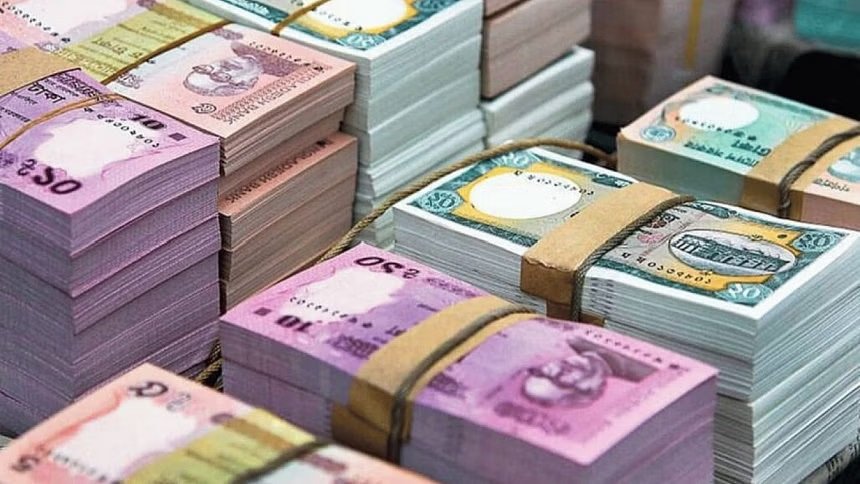However, this year brings a notable change. During the upcoming Eid-ul-Fitr, however, the festivities and blessings will have to do without the new notes.
This unexpected turn of events comes as new currency notes will not be available for Eid because the central bank has not been able to issue new notes without the portrait of Bangabandhu Sheikh Mujibur Rahman.
On Sunday, Bangladesh Bank issued a directive suspending the exchange of fresh notes for the public ahead of Eid-ul-Fitr.
Arif Hossain Khan, a spokesperson for Bangladesh Bank, stated that banknotes with new designs will be introduced between April and May. As a result, existing notes with the previous design are being withdrawn, and their circulation has been suspended.
The design and images in Bangladeshi banknotes have often been shaped by the ruling governments, mirroring their priorities and narratives.
Bangladesh Bank's website shows that the thousand-taka-note was introduced during the military-controlled caretaker government in October 2008, with an image of the Central Shaheed Minar.
The portrait of Sheikh Mujib, was added to the front of the note in 2011 during the Awami League government.
The 500-taka-note featured an image of Tara Mosque of Dhaka since December 1976, when Ziaur Rahman was the chief martial law administrator and Justice Abu Sadat Mohammad Sayem was president.
The design was changed by adding an image of the National Martyrs' Memorial (Jatiya Smriti Saudha) in July 1998, when the Awami League was in power.
The same government changed the design again adding Mujib's portrait and Saat Gombuj Masjid (the seven-domed mosque) in August 2000.
Images of the National Monument and Saat Gombuj Masjid were used in the note in July 2002, during the BNP -led four-party alliance government.
Again, a portrait of Sheikh Mujib and the picture of the National Martyrs' Memorial, printed in a light colour in the middle of the front side of the note, were added in August 2011 during the AL government.
The 200-taka-note had a portrait of Mujib since its introduction in March 2020.
The map of Bangladesh on the left-hand side and the portrait of Sheikh Mujib on the right-hand side were present on the 100-taka-note issued in March 1972, after the liberation.
A new note was issued in September of that year, this time with an image only of Mujib. The design was changed three times between March 1976 and December 1976, with an image of Tara Mosque.
A picture of Sheikh Mujib and Saat Gambuj Masjid was included in a note issued in March 2001. Another 100-taka-note was issued in June 2002 with a picture of the National Martyrs' Memorial and Saat Gambuj Masjid.
An image of Sheikh Mujib resurfaced on the note issued in August 2011.
The Tk 50-note was introduced in March 1976 with an image of Tara Mosque. The picture of Sheikh Mujib was added to the note issued in March 2012.
The Tk 20 note was introduced with an image of Choto Sona Mosque appearing on the right-hand side and a watermark featuring the head of a Royal Bengal Tiger on the left side in August 1979. Another note was issued with a portrait of Sheikh Mujib in March 2012.
The Tk 10-note was introduced in 1972, featuring the Map of Bangladesh and a portrait of Mujib. Images of Tara Mosque and Atiya Jame Mosque in Tangail were added to notes issued in October 1976 and August 1978, respectively.
Another note, with a picture of Atiya Jame Mosque and a watermark featuring the raised head of a Royal Bengal Tiger, was issued in September 1982, when Hussein Muhammad Ershad was the chief martial law administrator (CMLA) and Justice Abul Fazal Mohammad Ahsanuddin Choudhury was president.
Sheikh Mujib reappeared on the note issued in March 2012.








